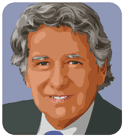Last week, the chief of staff to President Obama, Rahm Emanuel, chose to leave arguably the second most powerful position in the U.S. government to run for mayor of Chicago. Quite a development but one that shows the lure of a major city to someone as powerful as Mr. Emanuel.
But this is not that surprising when we recall how New York Mayor Rudy Giuliani captured the mood of America after 9/11, and how the influence of a mayor can occasionally transcend the actual city he leads. When Mayor Bloomberg recently exercised a leadership moment on the controversy regarding the mosque at Ground Zero, he ended up framing the national debate on this sensitive and controversial subject. Like it or not, cities and their first administrators are being called upon to play a greater role on issues affecting more than their actual jurisdictions and this is a welcome development.
Whether it has to do with climate change and other environmental concerns, it is obvious that large cities have a greater responsibility because of the density of their populations and their jurisdiction over local public transportation. If the issue revolves around employment, cities can play a pivotal role in keeping and in creating jobs by virtue of the quality of life they offer and their receptivity to businesses. When it comes to security and crime, city officials are the best guarantee for the needed security to enhance community life. And when we search for creativity and cultural expression, increasingly we see the inspiration and leadership coming from cities and their artistic communities.
Just last week the Mayor of Montréal Gérald Tremblay visited New York City on a trade mission with a special emphasis on creativity and as part of the city’s delegation to Advertising Week. To different and prestigious audiences, he articulated the many ways that Montréal and New York City have so much in common and how they have and can continue to cooperate in the future. The mayor’s enthusiasm extended to supporting a high-speed rail link between these two diverse and creative cities that are only 370 miles apart. We can expect more talk of common purpose in the months ahead from other mayors. Why, then, should we pay so much attention to cities?
It is becoming increasingly obvious that large cities are centers of economic, political, cultural, and community life. Together, they are doing more to increase their efforts to share best practices on safety, environmental, educational, and community integration issues. For instance, the C40 Large Cities Climate Leadership Group—involving 40 major cities from five continents—is committed to fight against climate change and improve energy efficiency. Other regroupings such as the ICLEI, which represents local governments, is dedicated to sustainable development. The International Cities of Peace involves an international alliance promoting peace conferences and hosting international organizations. Finally, the Association internationale des maires francophones, which includes cities from 48 French-speaking nations, is a forum to share best practices and new ideas regarding diversity.
These examples show that in lieu of the difficulties that national governments have in solving problems of planetary proportions such as climate change, cities seem to have greater flexibility to transcend the bitter partisan divide, find common ground and fill the void. The link with the voter is more direct and concrete. Ideology plays a lesser role and the basic notion of living as neighbors, provides an immediate and promising framework for problem solving.
This does not mean that national governments are on the road to a lesser role. But the attraction of cities to powerful persons such as Rahm Emanuel and Michael Bloomberg shows the importance that cities will play in the future to tackle the big challenges to improve the world.
* John Parisella is a guest blogger to AQ Online. He is Québec’s Delegate General in New York, the province’s top ranking position in the United States.




